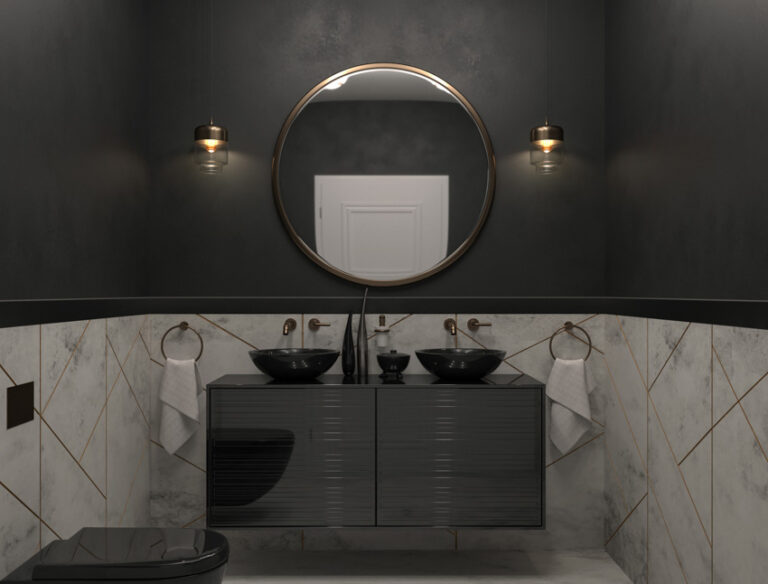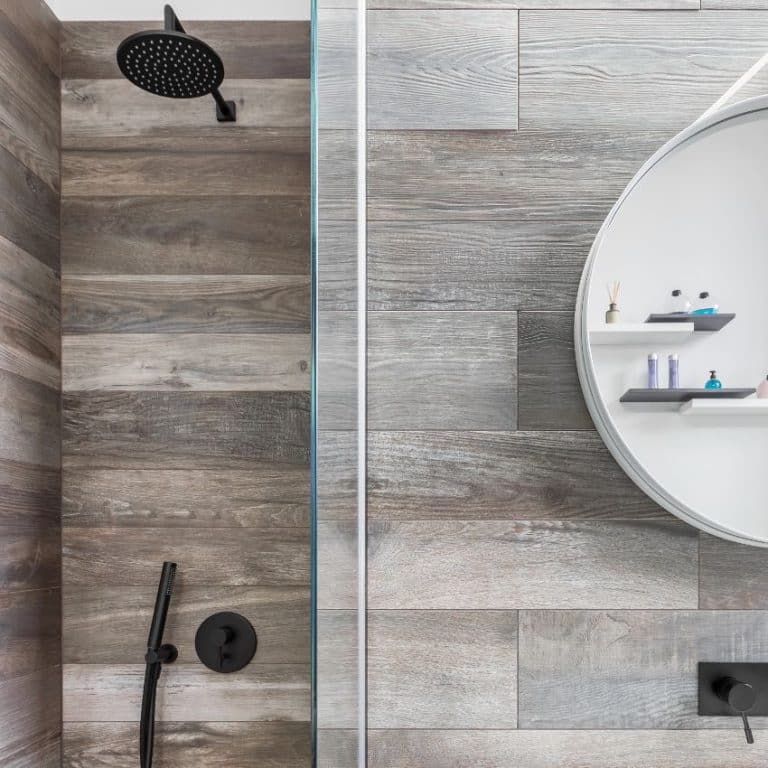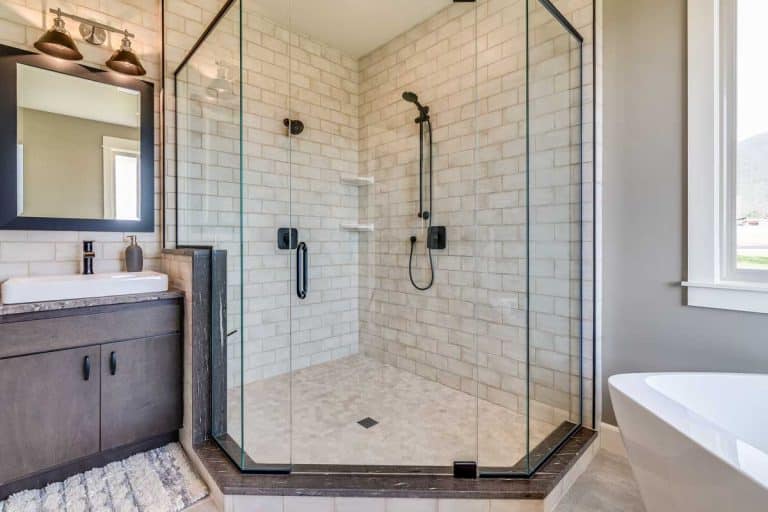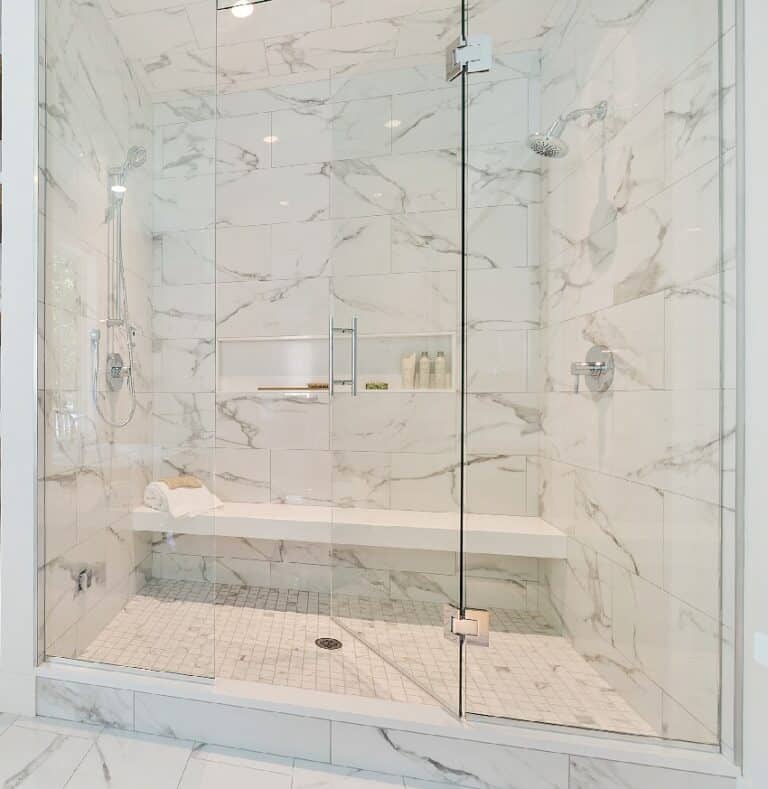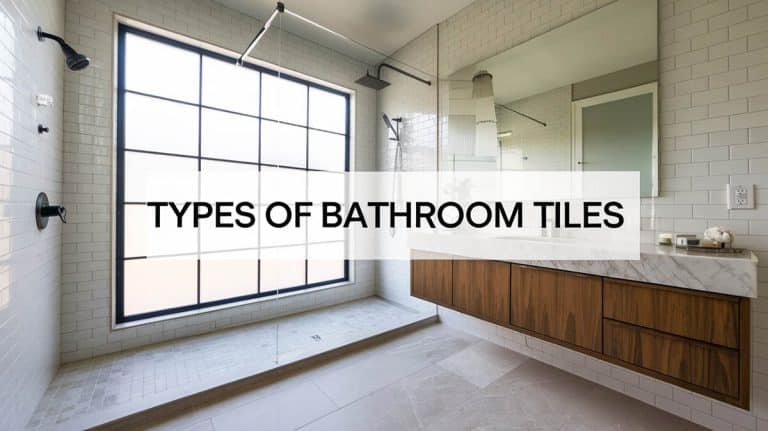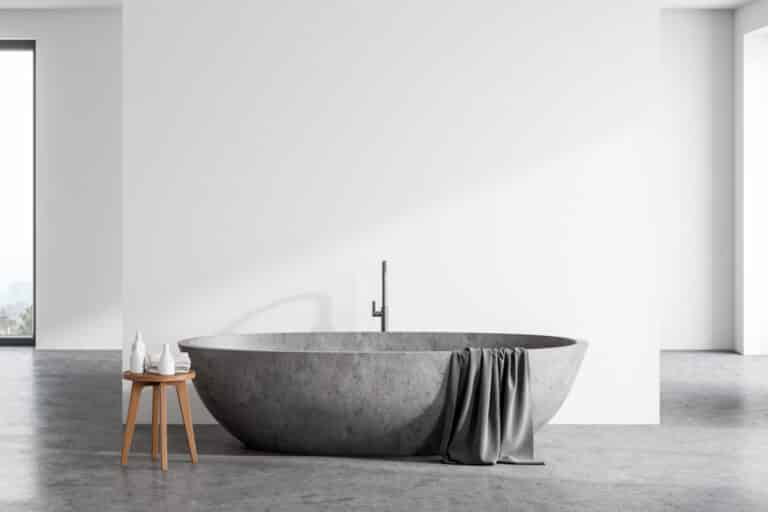Built-in Shower Bench Pros and Cons
Here, we share our built-in shower bench pros and cons guide with what it is, its advantages and disadvantages, the ideal dimensions, and the best material to use.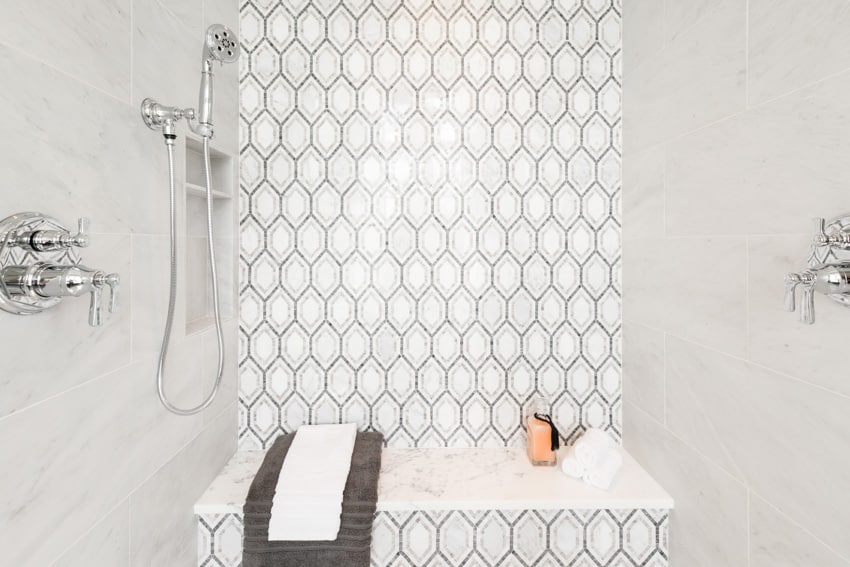
All at once, elegant, functional, and safe, the built-in shower bench is a good choice for adding a sitting feature to their showers. This humble seat can immensely improve your bathroom experience and even make your enclosure much safer to use.
A built-in shower bench is installed inside the stall where people can sit during baths. Unlike other showering seats, such as a floating bench, a fold-down seat, or a portable chair, this seating style is permanently framed into the floor and wall. It is not open underneath but is instead a solid block custom-made to fit in the shower during construction.
This bench can span the entire width of a stall or enclosure and provide more seating space. It is usually finished with waterproof material, such as tile or marble, for durability, easy maintenance, and aesthetic reasons.
Let’s talk about this fascinating addition to your bathroom – the pros and cons, recommended dimensions, and materials, so you can make an informed decision before installing one.
Pros of a Built-in Shower Bench
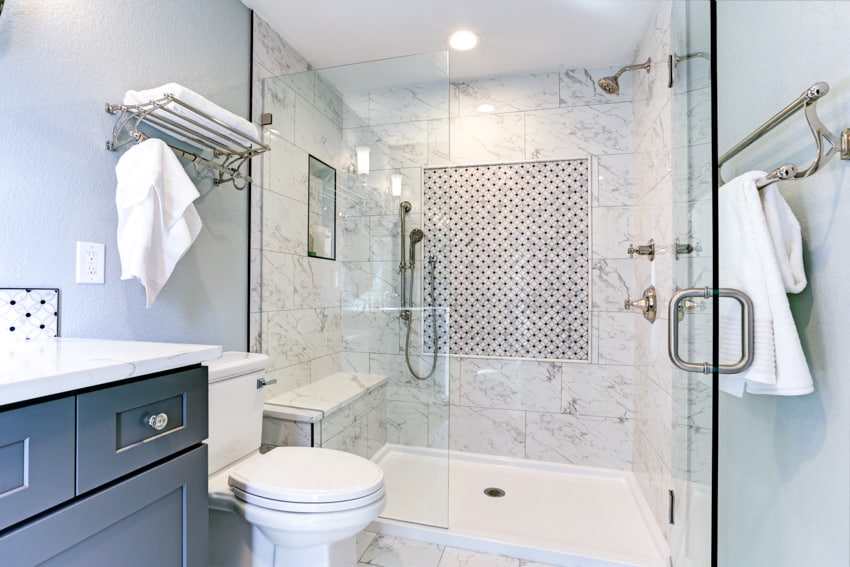
There are several advantages to having shower benches in your bathroom – from function to indulgence. Hence, here are some of the best reasons to have one in your enclosure.
- Customizable
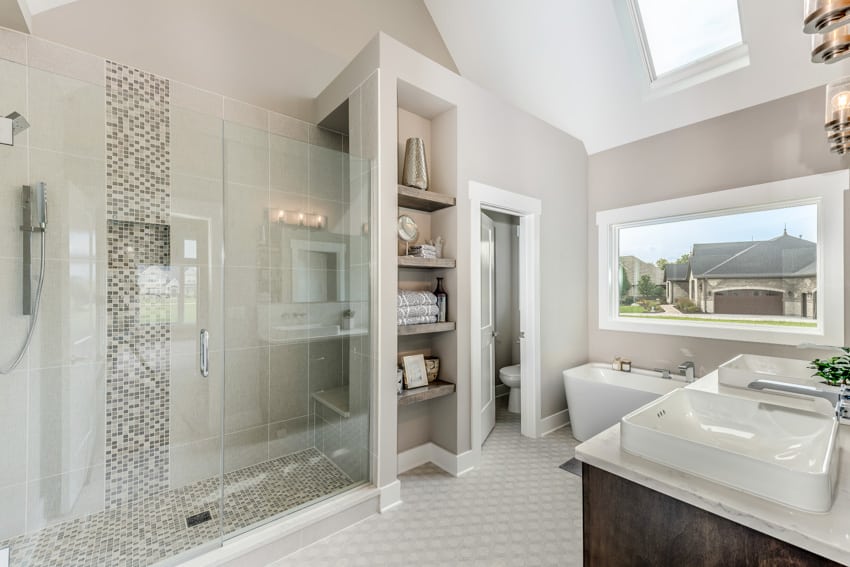
If you’re building your new home or renovating your bathroom, a built-in shower bench is an excellent feature to add. Built-in benches are most regarded for durability and practicality, as well as allowing customization and a sophisticated appearance.
However, your space allocation and configuration of the wet room will determine if this seating type is the best choice for you.
Those who take home interiors seriously will find the most design flexibility with built-in shower benches. From the name itself, built-in benches are constructed simultaneously with the showers.
During the planning stages, you can choose to have a curved design, a linear one, or any other shape your enclosure space allows. Read more about our guide on different shower bench ideas here.
- Sturdy
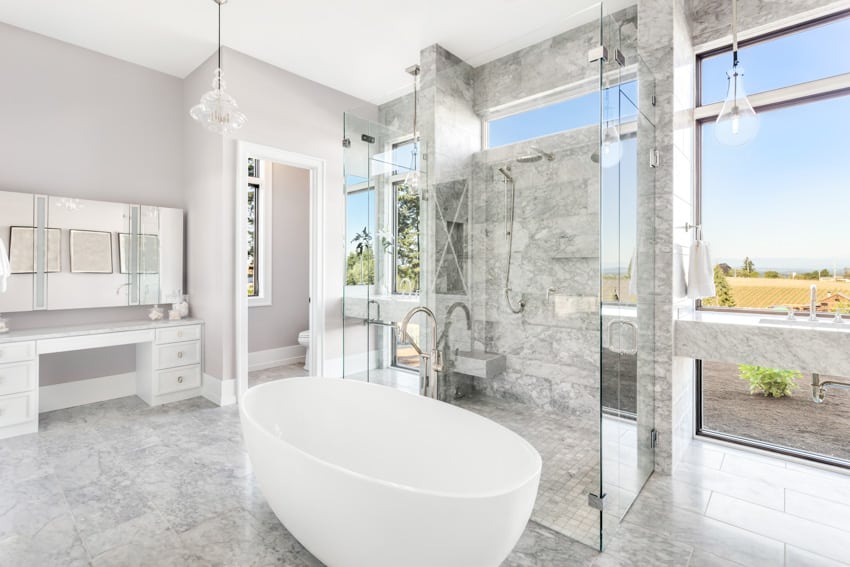
Built-in shower benches are considered non-movable members made during the construction stage. These built-in seats are reinforced underneath.
Some of the materials used are brick, wood, or concrete. It is then covered with tiles or stone to hide its structural frame.
Hence, this makes built-in benches the sturdiest and most hard-wearing among these seating types.
- Spacious and Functional
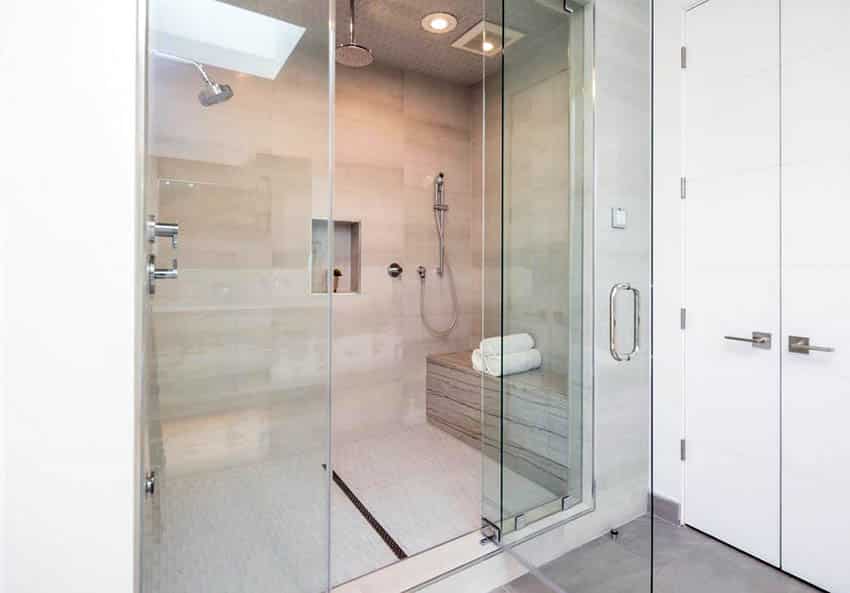
You can design your built-in shower bench to run the whole width of your enclosure. This allows more space to sit on and do other activities in the bath, such as women shaving their legs.
Others find it convenient to put showering accessories on, while some designs can even hide a cabinet underneath for additional storage. Its comfortable seating capacity allows you to relax in the bath, as well.
Furthermore, long, hot showers have proven health benefits, and a reliable bench will help you achieve them.
- Safety and Accessibility Feature
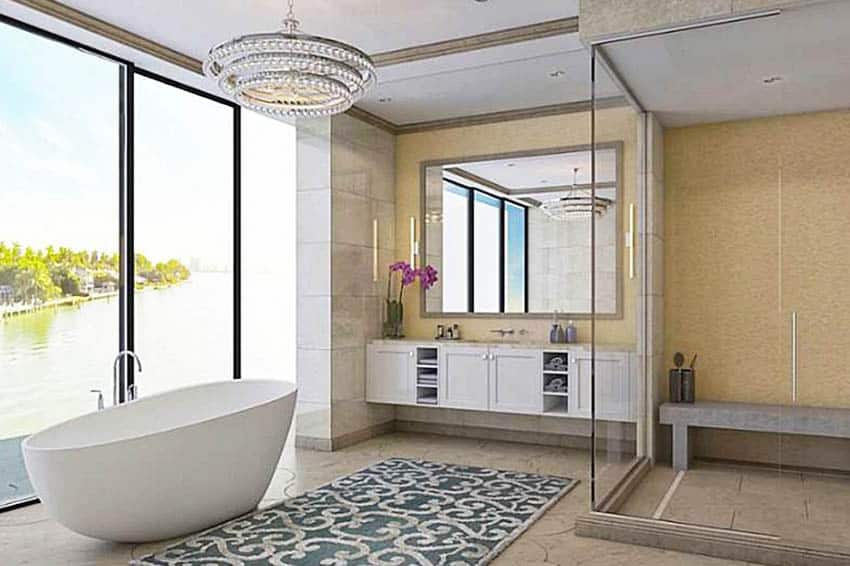
Built-in benches are also useful for their accessibility design features. The elderly, individuals with mobility issues, and those with injuries can use the seating for safety.
If possible, you can add a safety handrail to assist these users further for sitting down and getting up.
- Luxurious Appeal
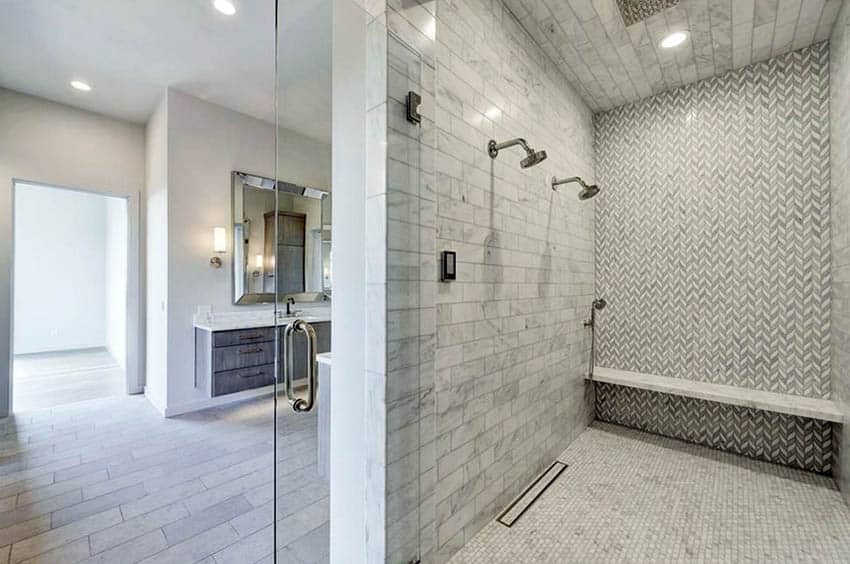
Built-in benches have a luxurious appeal you can liken to a spa. They are part of the whole bathroom design concept. In this way, they likely have a similar or complementary finish as the walls or floor.
The whole enclosure unit appears cohesive and elegant with built-in benches, unlike fold-up seats that look almost an afterthought. Read more about the different design ideas for luxury walk-in showers here.
The Cons of a Built-in Shower Bench
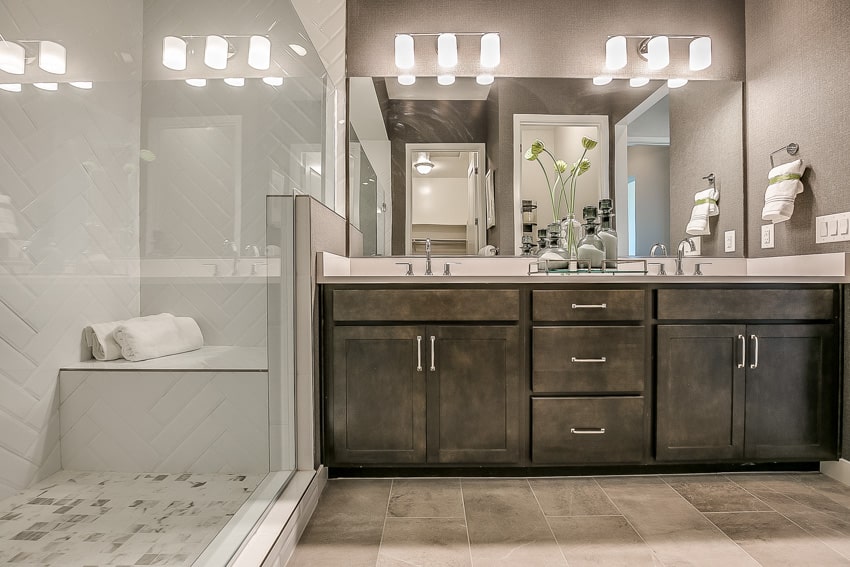
Now that you know all the conveniences of a built-in shower bench, it is important to note a few drawbacks.
- Takes-up Space
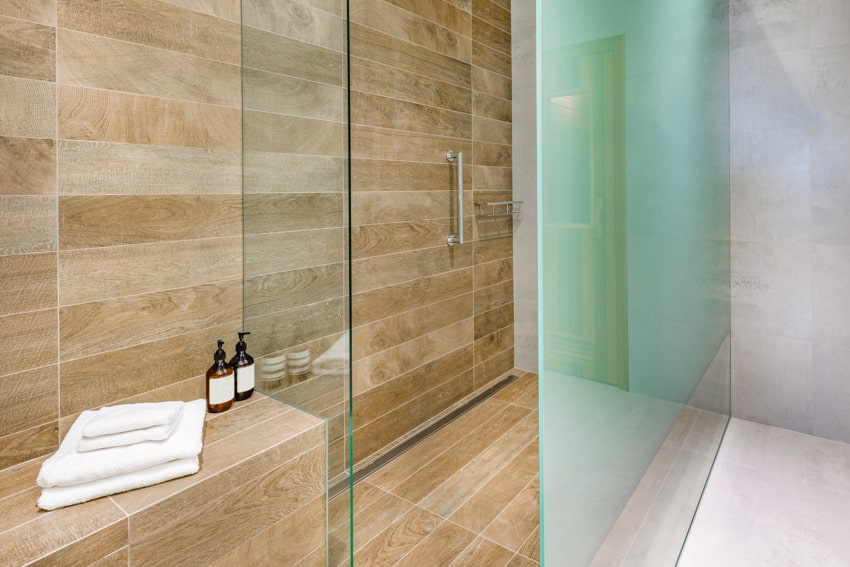
Built-in benches can occupy greater space in your showers than other seating types. It may add some sitting room but compromise standing room for small stall spaces.
If the space allotted for your enclosure is not too sizable, you may risk blocking the entrance or making the space too tight.
- Not An Add-on
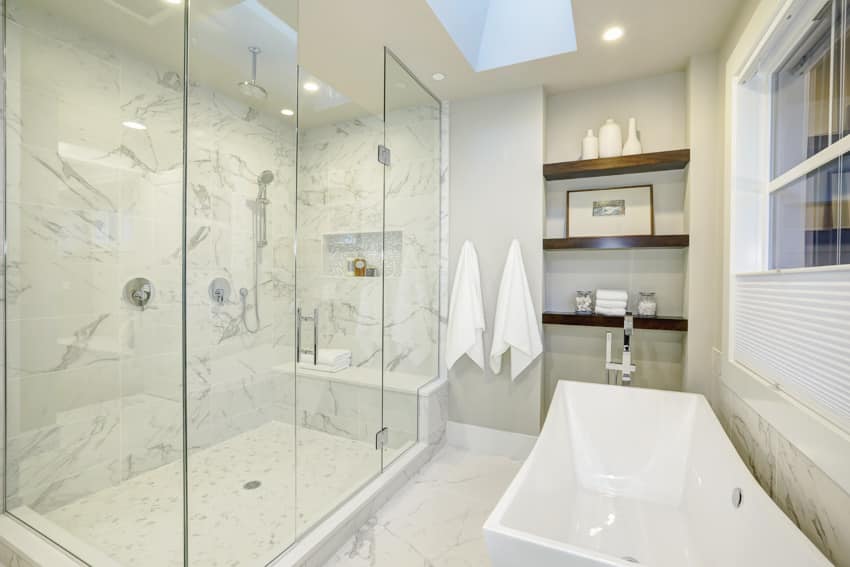
You can only customize a built-in shower bench when you are building your new home or doing a renovation. They are best installed at the same time as the whole bathroom.
If you already have an existing enclosure, it won’t be easy to add a built-in seat suddenly. Besides taking a significant amount of work, you’ll find it won’t blend as well as it should.
Built-in Bench Dimensions
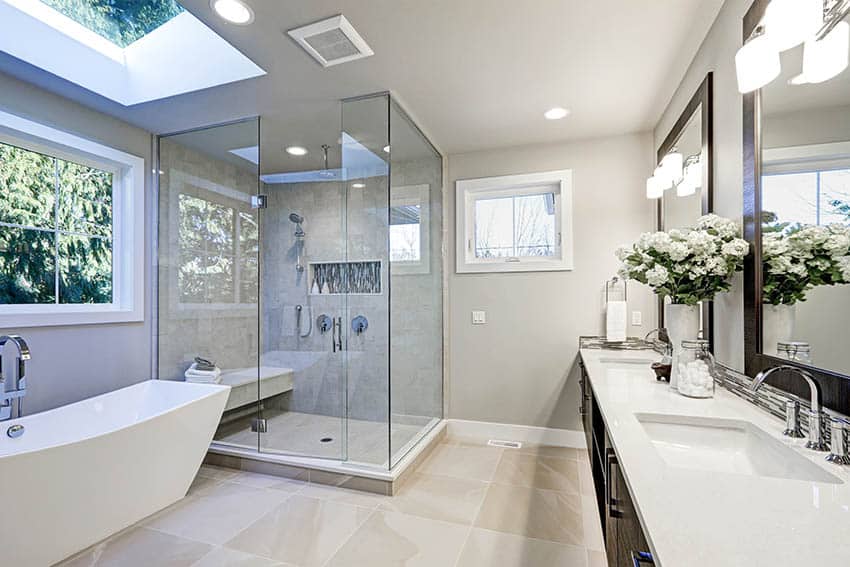
If you’ve weighed the built-in shower bench’s pros and cons, it’s time to determine how wide, deep, and high it should be.
The ideal size would, of course, depend on the user. You should find it large enough to sit comfortably but leave enough standing room.
Bench Height
Between 17 and 19 inches, as recommended by the Americans with Disabilities Act (ADA).
Bench Width
There is no minimum requirement as per the ADA, but the industry standard is at least 14 inches wide.
Bench Depth
The depth is more important than the width since it will affect your posture. A good measurement is between 15 and 16 inches.
Read more about different shower sizes and bathroom dimensions here.
When it comes to the installation of these benches, a 1 to 2-degree slope is advised to provide adequate draining so water does not pool on the surface and become stagnant.
Shower Pan with Built-in Bench
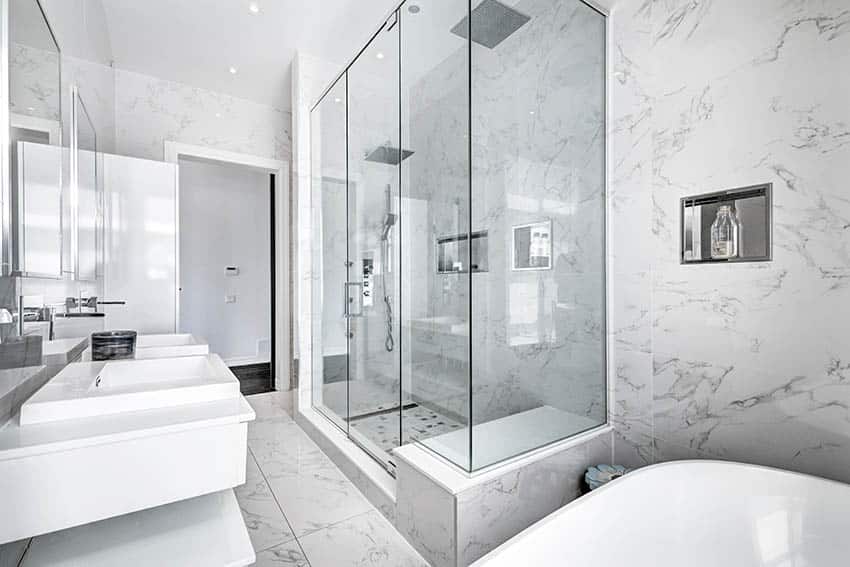
Another way to incorporate a bench into your bathroom is by having it built-in with the shower pan. This is a good strategy for those with narrower spaces but still want the luxury of a seat.
You can either custom-build your showers base with a bench or find a ready-made one with seating in home stores. However, both options need to be planned and installed with the rest of the enclosure for a more seamless appearance.
Best Material for a Bench in the Shower
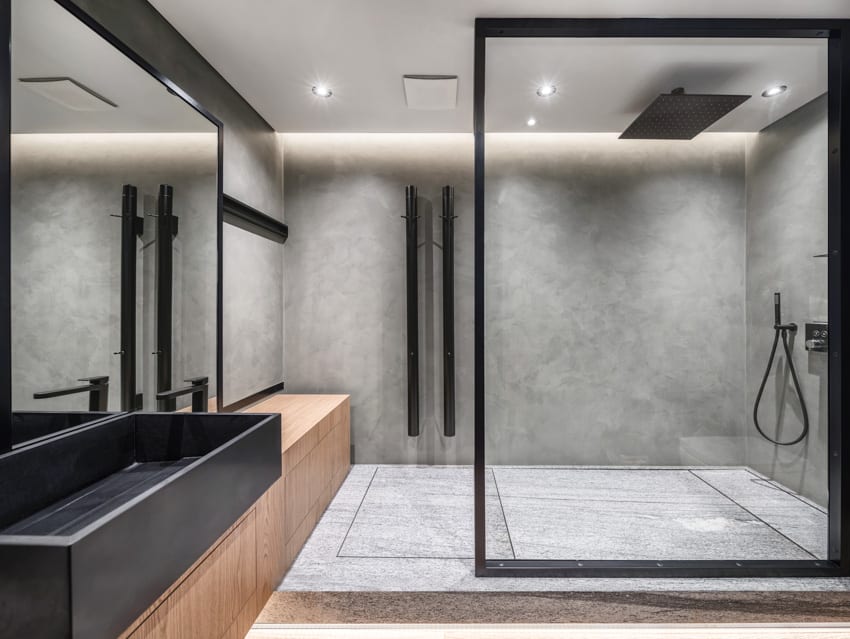
Your shower bench’s material will affect its durability, appearance, and comfort. Teak, the type of wood typically used in outdoor showers, is a popular choice for its durability and moisture-resistant properties. See examples of teak shower floors on this page.
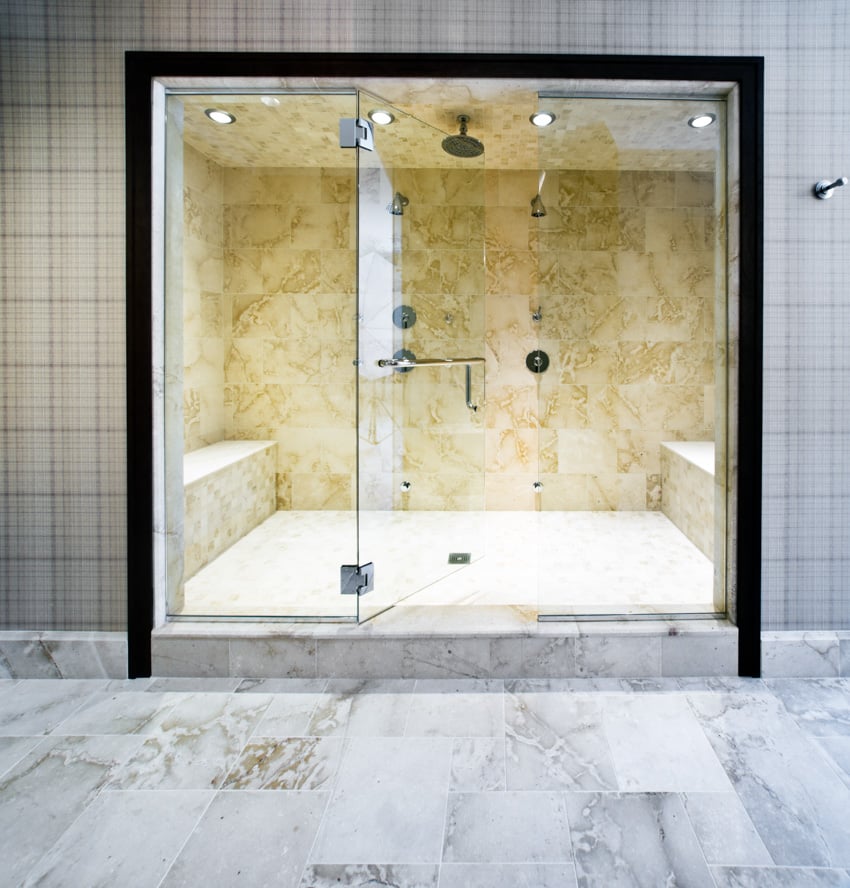
If you’re after a more stylish look, a marble finish is the way to go. It tolerates humidity very well but tends to be cold before heating up under hot water. Stones like quartz and granite are also strong and low-maintenance materials.
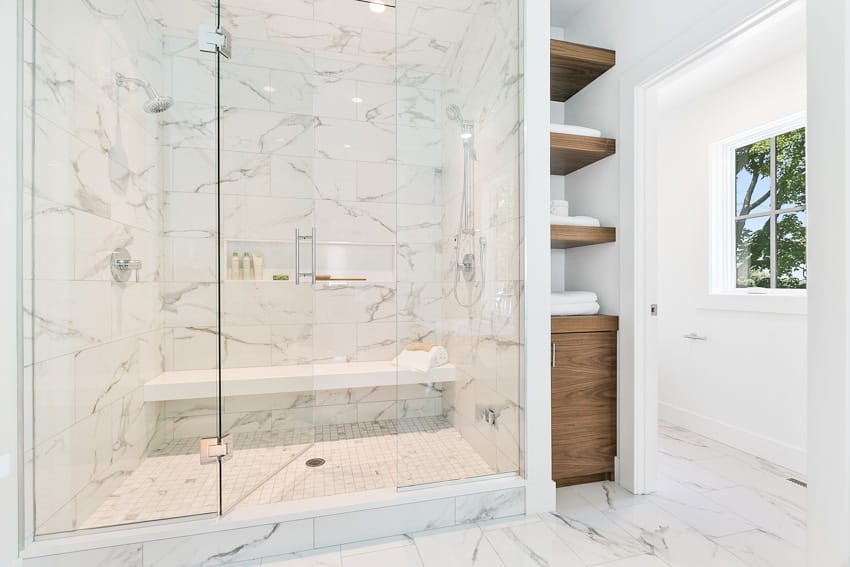
If you find natural stone a bit expensive, you can opt for tiles instead. These materials easily blend with your shower’s floor and walls, making your overall shower enclosure pleasing.
Whatever material you decide on, ensure that it has rounded edges, is structurally sound, and isn’t placed directly under the water flow unless you want it to be continuously wet. Adding non-slip tiles to the flooring can help prevent slipping while sitting down.
Check with several local bathroom remodeling contractors to answer your questions and get more information about the benefits and available features of these benches.
See more related content in our article about the different types of bathroom showers on this page.

